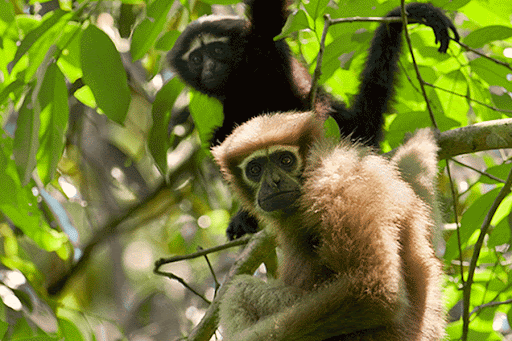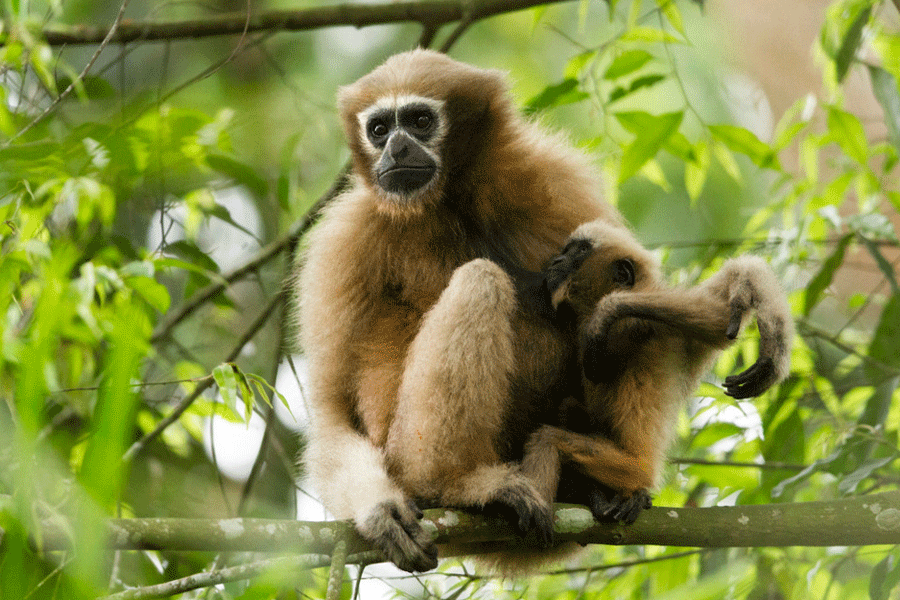The Western Hoolock Gibbon, the only ape species found in India and one of humanity’s closest relatives, is fast vanishing from the country because of habitat loss, forest fragmentation, hunting, and conflict with humans.
Twenty years ago, India had roughly 12,000 of these agile, tree-dwelling primates.
Gibbons are listed as "endangered" on the IUCN Red List and protected under Schedule I of the Wildlife (Protection) Act, 1972.
In Tripura, a survey in 2005 recorded 97 of them across three forest patches. That number now stands at just 79, split into 32 groups.
These primates, found in the forested belts south of the Brahmaputra River and east of the Dibang River, are highly canopy-dependent. They rarely come down to the ground, and when they do, walking upright with arms raised they become vulnerable to attacks from dogs and other predators.
Their habitats in Tripura, such as Trishna Wildlife Sanctuary and the forests in Gomati and Khowai districts, are fragmented. These sanctuaries cover less than 21 square kilometres which is not enough to sustain a viable population.
“We are emphasising the need to maintain cultural integrity while protecting the gibbons,” said Sabyasachi Dasgupta, a professor at Tripura University who is involved in new conservation efforts. “Traditional methods like shifting cultivation are deeply rooted, but they often disrupt forest continuity. We need strategies that reduce ecological harm while respecting cultural traditions. Canopy connectivity is crucial for gibbon movement and survival.”
To stop the decline, the Tripura forest department has joined forces with Tripura University and conservation NGO Aaranyak to draft an action plan for the species’ survival. The roadmap emerged from a multi-stakeholder workshop held earlier this year.
“Long-term population monitoring, forest restoration, and community engagement are essential parts of the strategy,” said Dasgupta. “We’re also training forest staff and law enforcement and conducting detailed ecological and behavioural studies.”
Eight individuals are thriving in the core zone of Trishna Sanctuary, said Bimal Das, assistant conservator there. H. Vignesh, divisional forest officer of Gomati, noted sightings in the Amarpur subdivision, although population data is still being gathered.
In neighbouring Meghalaya in 2023, two tribal communities involved in gibbon conservation received backing from the Garo Hills Autonomous District Council and also designated a village wildlife reserve in Selbalgre, near Tura, as gibbon habitat.
These gibbons live in small family groups and give birth only once every two years. They reach maturity around age six to eight.
Such slow reproduction makes population recovery fragile but without sustained intervention, India may lose its only ape to extinction.












